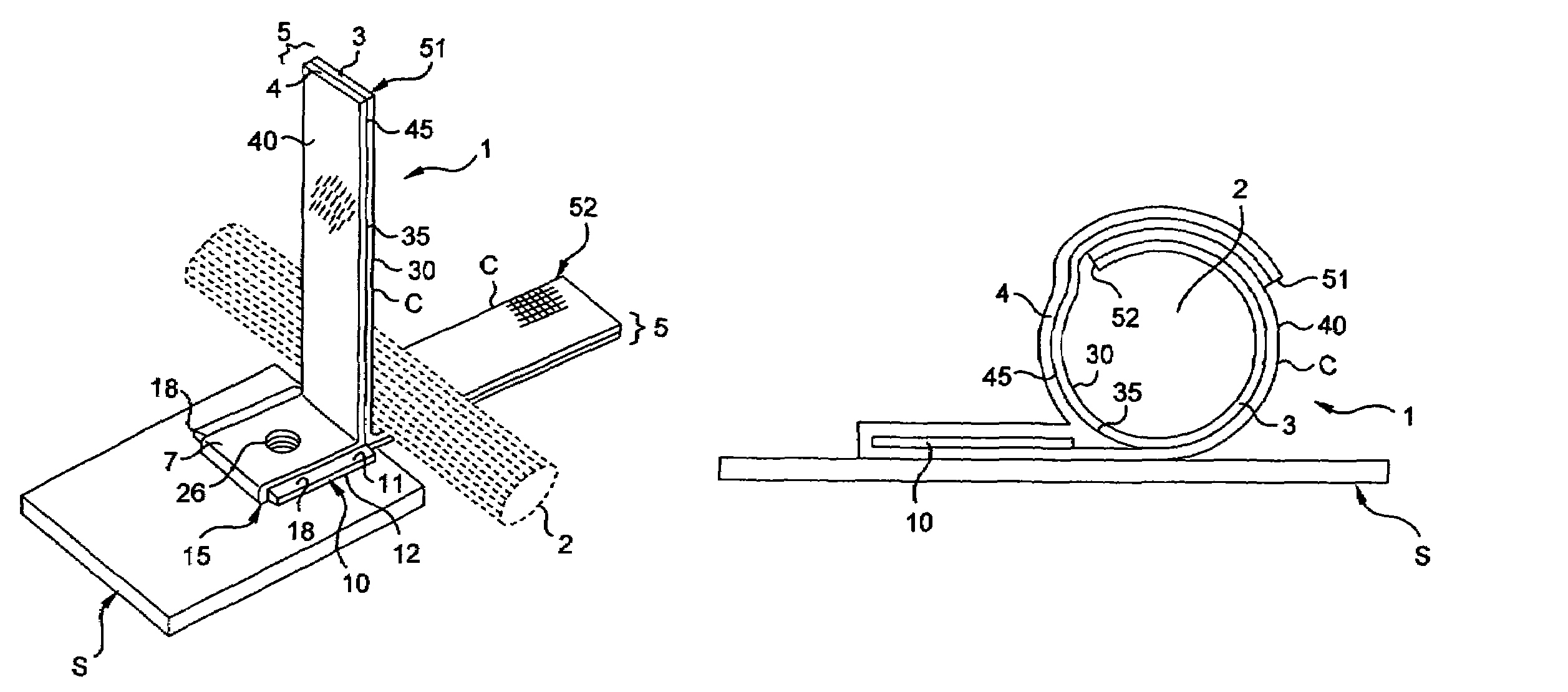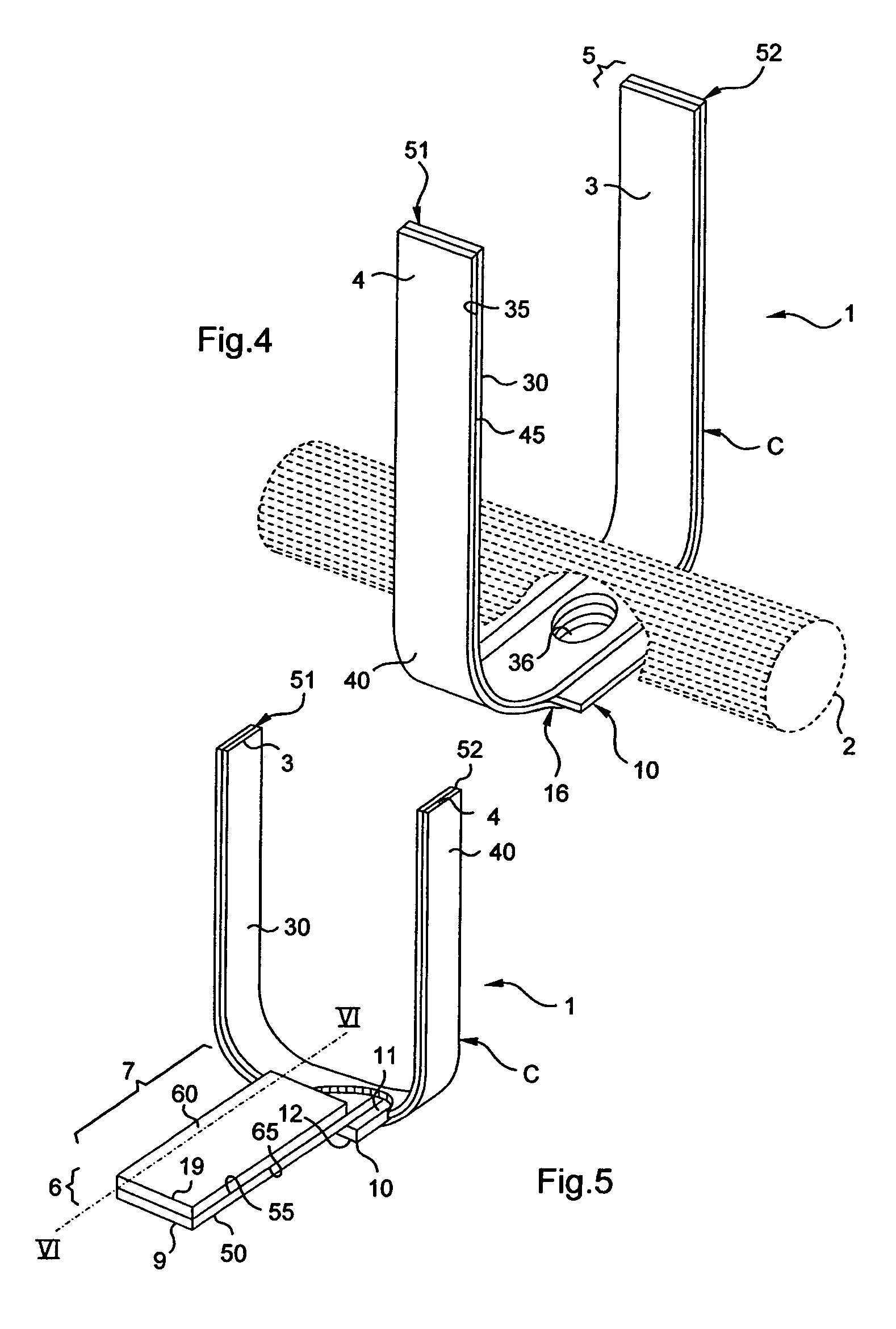Device for fastening elongate elements to a structure
a technology of elongate elements and devices, applied in the direction of capacitors, pipe supports, electrical devices, etc., to achieve the effect of simplifying installation plans
- Summary
- Abstract
- Description
- Claims
- Application Information
AI Technical Summary
Benefits of technology
Problems solved by technology
Method used
Image
Examples
first embodiment
[0059]The device 1 for fastening elongate elements as shown in FIG. 1 corresponds to the invention and comprises a first flexible self-gripping strip 3 with a loop-closure system on a first face 30, and a second flexible self-gripping strip 4 with a hook-closure system on a first face 40, each of these first and second flexible strips having a respective second face 35 or 45 that is self-adhesive, and both of them being identical in width. By way of example, each of them may be a Velcro™ type strip, either having a hook-closure system (a “male” system) or a loop-closure system (a “female” system).
[0060]Said first and second flexible strips 3 and 4 adhere at least in part one against the other via their self-adhesive second faces 35 and 45 so as to form a first flexible tape 5 by uniting together at least the facing first and second free end zones 51 and 52 of said first and second flexible strips 3 and 4.
[0061]The length of the flexible tape 5 is longer than the outer perimeter of t...
second embodiment
[0068]In a second embodiment shown in FIG. 4, the flexible strips 3 and 4 are identical in length and said rigid plate 10 is inserted with adhesive between said flexible strips 3 and 4, being substantially centered between the free ends 51 and 52 so as to constitute a non-offset fastening support 16 for fastening to said structure S (not shown in FIG. 4), without said device 1 being offset.
[0069]Thus, a collar C is obtained by adhesion between the face 30 of the free end 51 on the face 40 of the free end 52, or of the face 40 of the free end 51 on the face 30 of the free end 52.
[0070]At the level of the non-offset fastening support 16 shown in FIG. 4, the flexible strips 3 and 4 and also the rigid plate 10 presents a hole 36 for securing said flexible collar C to said structure S by clamping means engaged in said hole 36.
[0071]In a variant, the rigid plate 10 may naturally present a projection 18 on either side of the flexible tape 5 in the same manner as in the first embodiment, th...
PUM
| Property | Measurement | Unit |
|---|---|---|
| flexible | aaaaa | aaaaa |
| length | aaaaa | aaaaa |
| width | aaaaa | aaaaa |
Abstract
Description
Claims
Application Information
 Login to View More
Login to View More - R&D
- Intellectual Property
- Life Sciences
- Materials
- Tech Scout
- Unparalleled Data Quality
- Higher Quality Content
- 60% Fewer Hallucinations
Browse by: Latest US Patents, China's latest patents, Technical Efficacy Thesaurus, Application Domain, Technology Topic, Popular Technical Reports.
© 2025 PatSnap. All rights reserved.Legal|Privacy policy|Modern Slavery Act Transparency Statement|Sitemap|About US| Contact US: help@patsnap.com



